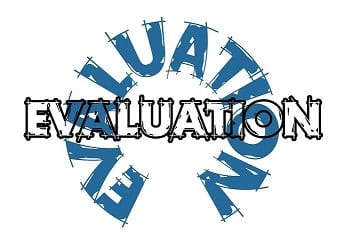How to Assess Mentoring / Youth Development
If you’re a skill-building program, chances are you know you need to assess youth development. But what, and how?
As we reported in 5 Ways to Assess After-School Outcomes there are countless tools available in a variety of formats, and most are based on a particular philosophy as to what’s important to assess.
So, how do you know what you should assess, in order to choose the tool or process that’s right for you?
It all starts with “Why?” Why assess youth development?
 Choosing an assessment tool is a bit like choosing the perfect pair of sports shoes, with the two main considerations being why you need them (for running? soccer? workouts?) and how they feel on your feet.
Choosing an assessment tool is a bit like choosing the perfect pair of sports shoes, with the two main considerations being why you need them (for running? soccer? workouts?) and how they feel on your feet.
When considering assessment programs, you can even back up a bit to ask the (almost) obvious … why are you assessing your program in the first place?
Hah! You’d be surprised how few people ask this question. Understanding the benefits that are important to you is a simple first step to take. Here are just a few that you might consider:
- better general oversight (including managing classes and student numbers)
- better teacher and mentor oversight (knowing who needs a little help and who can mentor other teachers)
- better teacher / mentor training (good metrics can minimize the need for outside trainers)
- better student outcomes (which always come from good oversight and better teaching)
- better support — financial and personal (which always comes from good oversight and great data)
These are just a few of the myriad benefits. Can you think of more?
Next, ask “What?”
Once you’ve decided on your “whys”, you can think about “what”. What do you want to assess? If you’re a mentoring program, chances are you understand that the more closely attuned your teachers are to how your students are learning, the greater success they’ll achieve. But typically, teachers and mentors in youth development programs aren’t highly trained teachers. So if you want to fine-tune their teaching it’s very helpful to have them assessing students ongoing, based on the qualities and abilities that empower student learning.
Merge Education’s director Bill Rossi has made a life-long study of this, and he identified 15 qualities and abilities we all need to be able to learn well. He defines and explores these Principles of Empowerment in his book Venturing Together: Empowering Students to Succeed, and these are the metrics we used to create one of the assessments in our software SETS: Student Evaluation & Tracking System.
So, those metrics (here) can give you a good feel for SETS, just as looking at the metrics in other tools will give you a good feel for those. Because just like a pair of running shoes, it typically comes down to which one feels the best … all the way around.
Numero Uno … how do you feel?
Chances are, you’ll ultimately make your best choice by intuition … even if two or three align with your criteria, one pair will simply appeal to you most. My advice is to do the same when choosing an assessment process or program. Find two or three that you think might work for you, then dive into them one by one and see how they feel. Get a tour or a demo. Read and re-read the sites and FAQ, until you know your answer. Since you’ve already narrowed the field, it’s really a visceral and intuitive decision and you need to feel comfortable with your choice.
What’s the big deal? Why assess youth development?
Why does it matter so much? If you end up with a tool that focuses more on attendance than learning, for example, then your data won’t tell your story. But if you’re tracking benchmarks that are meaningful to you, the reports will mean something. And by reflecting you and your program, they’ll give your supporters a better feel for you and good insight into why they should support you.
Merge Education is for Youth
At Merge, we really are in this for the youth. Try SETS, and you’ll get it.
SETS makes sense, and it will help you get sustainable funding just like it did us.
Would you like a tour? We’re at your service. Or just get started with SETS today!
Mary Helen Rossi is Co-Director of Merge Education, which grew out of 20 years of after-school fine arts mentoring to over 2,500 challenged young people. Merge’s SETS software reflects this experience: as one client said, “It’s clear that a lot of thought and expertise went into SETS!”







